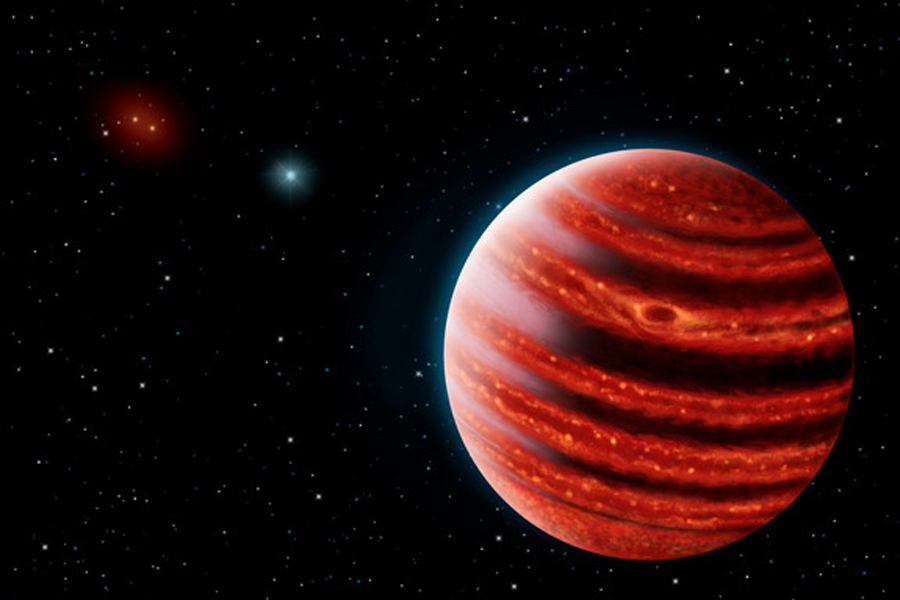Planet hunters spot Jupiter Jr., 96 light years from Earth
Loading...
A team of astronomers came across the latest clue in the quest to unravel how solar systems and their planets evolve.
Scientists discovered a Jupiter-like planet circling a very young star similar to the sun about 96 light years from Earth, making it one of the smallest planets beyond our solar system that has been directly imaged.
The team, led by Stanford University physics professor Bruce Macintosh, came across the exoplanet, dubbed 51 Eridani b, by using the new Gemini Planet Imager attached to the Gemini South Telescope in Chile.
Though much younger than our Jupiter, 51 Eri b, as it's known, is nearly twice the size of the largest planet in our solar system. It orbits its parent star from a slightly greater distance than Saturn does from the sun, writes Stanford’s Bjorn Carey.
"51 Eri b is the first young planet that probably looks like Jupiter did billions of years ago, making it currently our most important cornerpiece of the planet-formation jigsaw puzzle," University of Arizona planetary scientist Travis Barman said in a statement.
"It's one of the very youngest stars this close to the Sun,” Eric Nielsen, a postdoctoral researcher at Stanford who co-authored the study published yesterday in the journal Science, in an interview with Mr. Carey.
The planet formed 20 million years ago, about 40 million years after dinosaurs became extinct. In our world, that time frame is hard to fathom. But according to the cosmic clock, 51 Eridani b is so young that it’s still radiating heat from its formation, which is why the imager was able to detect it directly.
Similar to Jupiter, the young planet’s atmosphere consists mostly of methane.
Scientists have come across a number of exoplanets – a term used to identify planets found beyond our solar system – with similar features, but nearly all of them have been five to 13 times as massive as Jupiter.
Last month, a Brazilian-led team of scientists discovered "Jupiter 2.0," an older planet twin with a very similar mass to Jupiter. Not only does it orbit a star that looks like our sun, it also has the same mass and is even the same age as Jupiter.
Not long after, NASA discovered a “super-Earth” just 21 light years away, making it the nearest rocky planet outside our solar system. The search for more telling stars and planets continues, but these latest discoveries hint that we may not be as far from other worlds as we may think.
Material from Reuters was used in this report.





